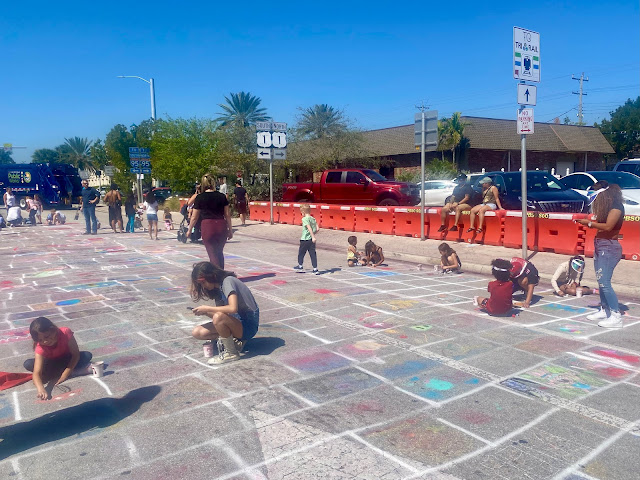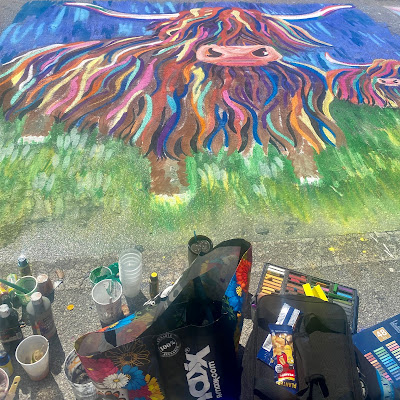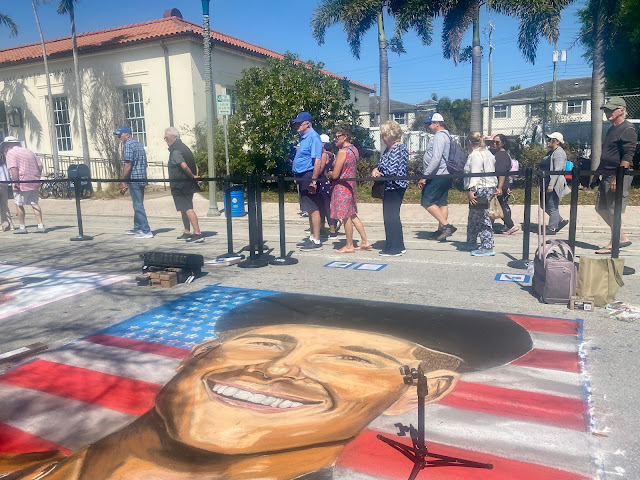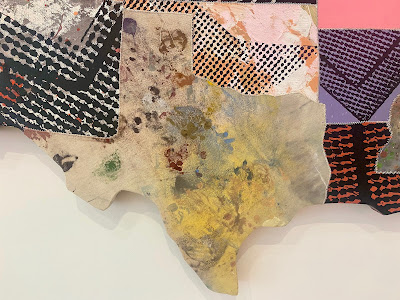Saturday, February 24, 2024
Lake Worth's Big Weekend
Thursday, February 22, 2024
To Paradise (2*)
At 70, I'm old enough to keep a NEVER AGAIN list, which includes colonoscopies and re-painting my apartment. Hanya Yanagihara now has the distinction of being the only author to make it. She's dead to me although come to think of it, that's never stopped me from reading someone.
Unlike much of the world, I dismissed A Little Life, Yanagihara's previous novel, as misery porn. But friends I trusted, including one who also felt abused by its unrelenting masochism, insisted that To Paradise was worth reading. And it wasn't until 200 pages into this overlong book that she wallops us with her first tragic death, in this case to make a point that becomes clear only later.
Gay romance propels the first section of To Paradise, which reimagines the U.S. geography and history of the 19th century in such a way that the "Free States" permit homosexuality. This enables Yanahigara to examine antiquated conventions of courtship in a new way:
. . . . intimacy was encouraged before an arranged marriage between men, but it was usually to be explored only once or twice, and only to determine one’s compatibility with one’s possible intended . . .
Who wouldn't want to live in such an enlightened place? She's at her best here although the novelty begins to wear thin as it becomes clear how heteronormative her characters remain in a society still mostly defined by status and wealth.
The second section, set in the 20th century, explores, rather confusingly, the royal lineage of Hawaii's indigenous peoples which has become almost meaningless after statehood. Many of the character's names are the same as those used earlier, the first indication that Yanagihara is up to something more than the previous cliffhanger. The king's long apologetic letter to his gay son, now living in New York City, does her narrative heavy lifting and hints at emerging themes: the inevitability of human frailty and how little important things change from one era to the next. In the meantime Charles, the Hawaiian prince observes as his much older HIV+ lover says goodbye to his best friend Peter, dying of AIDS.
“Age is just a number,” one of his more vapid friends had said, trying to be nice, but he was wrong—age was a different continent, and as long as he was with Charles, he would be moored there.
* * * * *
“You should always have a close friend you’re slightly afraid of.”
Why?
“Because it means that you’ll have someone in your life who really challenges you, who forces you to become better in some way, in whatever way you’re most scared of: Their approval is what’ll hold you accountable.”
Suddenly, bracingly we're moored in the near future of s 21st century dystopia where pandemics have become both more frequent and deadlier. U.S. politics now make those of the covid-era seem like a picnic. Yanahigara exploits a fractured time line to revive reader interest. Chapters alternate between the perspective of Charlie, the novel's only major female character, an unattractive waif who seems to have been lobotomized by the medication that saved her from illness, and letters from the past in reverse chronological order, written by David, another controlling gay grandfather to Peter his best friend across the pond, yet another gay man. David, the unwitting and reluctant architect of a totalitarian state, has time to arrange marriages, too, perhaps for better reasons than his 19th century antecedent.
I had spared her pain, but had I also denied her ecstasy?
It's only near the end of this frustrating novel, which consistently encourages readers to imagine the worst, that I finally got a handle on the neuroses that makes Yanagihara write so obsessively about homosexuality. I've never been a fan of the term "fag hag," but I think the term applies to her, perhaps because this passage resonates so strongly:
The people you loved the most were in fact the people you had chosen to live with—friends were an indulgence, a luxury, and if discarding them meant you might better protect your family, then you discarded them quickly. In the end, you chose, and you never chose your friends, not if you had a partner or a child. You moved on, and you forgot them, and your life was no poorer for it.
C'mon Hanya. Breeders gonna breed and with marriage equality the somewhat tenuous rule of the land, even your gay friends may abandon you for their spouses and children. Get over your bitterness and keep in mind the upside of what used to be gay quid pro quo: you can live work half as hard and live just as well or work just as hard and live twice as well.
No mother or caretaker would have had the time to write this dreadful, over-cooked exercise in gay allyship.
Friday, February 16, 2024
Alexei Navalny (1976-2024)
 |
| Photo by Sergey Ponomarev (2012) |
 |
| Photo by Michael Probst (2024) |
Tuesday, February 13, 2024
Tomorrow and Tomorrow and Tomorrow (5*)
You CAN teach an old dog new tricks, or at least a belated recognition of an art form that booted up long after my non-digital childhood. HBO's enjoyable, even moving The Last of Us already had chipped away at my stubborn resistance but Gabrielle Zevin did the impossible with her feminist Trojan horse: this old Scrabble-loving Luddite may actually begin exploring Apple One's games thanks to her storytelling skill and generosity of spirit!
Wednesday, February 7, 2024
Miami Holocaust Memorial
After a visit to the Bass Museum, Christine and I walked over to the Holocaust Memorial which made quite an impression on me during a 1994 trip to Miami. Both the surrounding area and the world itself have changed enormously since then.
A menorah greets visitors to the memorial. After seeing The Zone of Interest the week before, we were primed for the gruesome experience.
A passageway inscribed with the names of concentration camps and death factories leads you to an enclosed plaza surrounded by water. Digital cameras have vastly improved my photography.
LOL Art
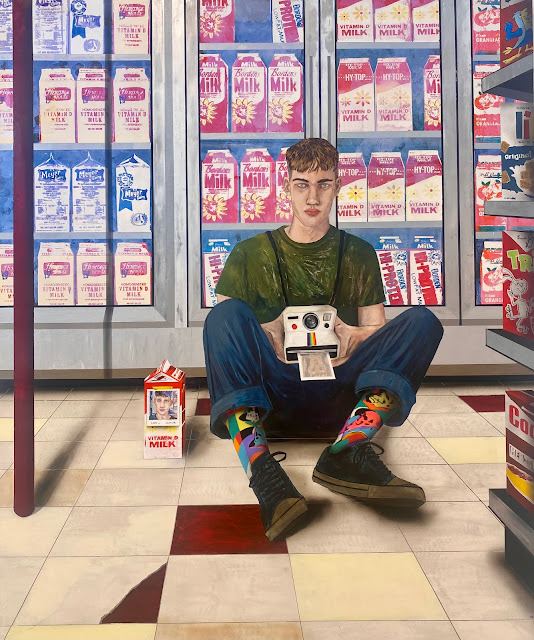 |
| Conceptual artist #19 (a child of the '80s, he places his Polaroid self-portraits in a familiar spot whenever he's feeling lost) |
 |
| Conceptual artist #26 (his coveted "sea-fan-fans" bring a calming ocean breeze to any interior)" |
 |
| Conceptual artist #17 (with the aid of scissors, paper doilies and origami, he elevates lily ponds to attract potential princes) |
Ya gotta wonder if this guy got his black eye for wearing too many boutonnieres, or asking another man to dance. Where's Carrie (or Aladdin Sane) when you need 'em?  |
| Conceptual artist #21 (his formative work, "prom night," marked the beginning of a career of works based on acts of disappointment) |
 |
| "Miami Mountain" by Ugo Rondinone (2016) |









